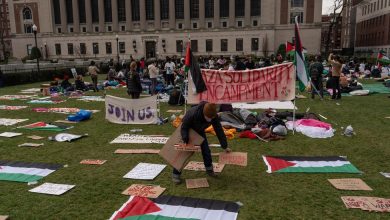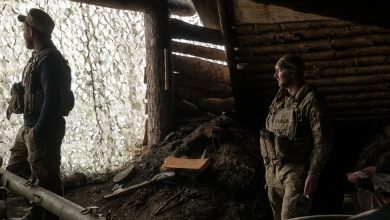Have We Forgotten Where We Are From?

A couple months ago I realized I had written nearly 50 editions of this newsletter and began thinking about what, exactly, I was doing with all these words. The ensuing conversation with myself wasn’t particularly deep and never fringed on anything existential, but it did inspire me to buy a lot of books from famous newspaper columnists of the past.
I was particularly taken by the work of Mike Royko, the Chicago newspaper columnist. During a 33-year run for three papers, Royko created a language deeply rooted in local familiarity and peppered with dialect from all the city’s ethnic enclaves. In his early work, Royko presented his fellow Chicagoans in sketches: Here were the wiseguys, the truckers, the police and the hypocritical politicians, in about 800 words or less. This efficiency came from his confidence that the reader could follow along with the references to State Street department stores, the “Puerto Rican neighborhood” and the way Chicagoans walk in the cold.
It’s hard to find such familiar writing these days. Newspapers have been gutted and most media is crafted to generate clicks from across the globe. This newsletter, for example, is written in my basement in California under the banner of a New York newspaper and reaches readers in India, Australia and South Korea — really, anywhere there is internet service.
This range of readers requires quite a bit of exposition on my part — nearly everything and everyone needs to be introduced. These conditions make it difficult to replicate a tone like Royko’s. If I have any general critique of myself and many of my colleagues who write opinion pieces for a living, it would be that the form tends to be a bit pedantic these days. This, I believe, comes from the fact that we don’t really know our audience in the same way Royko knew his. And so, we are constantly explaining ourselves to you.
I am not arguing that we need a return to local sensibilities or even that they have disappeared from society at large. I am only concerned here with style and how concurrent shifts in other mediums from mostly local to national or global are changing what we read, hear and watch.
Here’s an example: Just a short bike ride from where I live in Berkeley there is a squat red brick building with narrow slit windows and a flat, beige roof. I have no idea who designed this thing, but it looks like an overly imaginative child began building a model for a prison and then lost interest after the first floor. In the 1980s and ’90s, this spot at 924 Gilman Street became a venue for East Bay punk bands like Operation Ivy, Rancid and, most famously, Green Day. The building, which was once in an industrial row, is now in the process of being swallowed up by an outgrowth of national chains like Whole Foods, REI, and Office Depot. Bands still play there, but it’s harder to find these spaces where kids who grew up together, played in the same school orchestra or even skated at the same park end up in a band.
The people who will make the art of the next generation now find one another online and can collaborate from their bedrooms, which can make for better, or at the very least, more finely curated work. If, for example, you have only five kids in your high school who play the drums and each one is bad in his own way, chances are your band is going to have a bad rhythm section.
This isn’t a problem online — you will either find a suitable drummer or you will just use a drum machine. Your music may sound better and you might find a larger audience, but you’ve also replaced the community of the place where you live — with all its boredom and angst — with the community of what you like. The latter will always have an abstract quality because it’s not rooted in the particulars of a place.
Scenes like the ’80s California punk scene still exist, but they’re largely organized by specific aesthetic sensibilities. During the pandemic, my daughter and I got into magic tricks. At bedtime, we spend a lot of time watching videos of old magicians and read various message boards about them. The language in these spaces is all shorthand and referential. If you don’t know who Dai Vernon was or if you’re unfamiliar with how to deal from the bottom of a deck of cards, you will have no real way of following along. These types of online communities have existed for years, but they now have become so ubiquitous that they have replaced much of the ways in which people identify themselves, especially socially.
In journalism, the one space that receives sustained, local-style coverage is Twitter. If you think of Twitter as a place with its own myopic concerns, dialect and set of infamous characters that only matter there and nowhere else, it fulfills most of the characteristics of a small town. The coverage of what happens on Twitter, which, at times, feels like it makes up about a quarter of the words in every magazine, website or newspaper, generally skips over the long, explainer-y way we tend to write about pretty much everything else.
This situation also bleeds over into other aspects of the industry. I know many more colleagues “from Twitter” than I do from, say, a local journalist hangout for the very simple fact that I, like many reporters under 50 years old, never worked for a local newspaper.
Here’s where I’m supposed to say that all this is fine and just the way things are done now. But I hope you’ll allow me a little bit of crankiness because I do think that there has been something lost in the transfer between Royko’s localism and the parochialism of Twitter, just as music has suffered from the diffusion and then reorganizing of scenes from physical places to online.
For years when I was a teenager, my hometown, Chapel Hill, N.C., was supposed to become “the next Seattle.” Bands like Superchunk, Polvo and the Archers of Loaf all played a venue called the Cat’s Cradle and evinced a sound that felt like it represented a type of slacker Southern intellectualism and counterculture that was rooted in everything from the local barbecue to the anarchist bookstore downtown. This slacker spirit is still in me; my identification with Chapel Hill is grounded in this music, which I didn’t even particularly like at the time but understood was part of where I was from.
Art is simply better when it comes out of these lived contexts. It matters, for example, that Mavis Staples, Lou Rawls and Sam Cooke all went to the same elementary school in the South Side of Chicago and that many of their classmates came from families who carried Southern musical traditions up north during the Great Migration. It also matters that they grew up in the shadow of Mahalia Jackson, who they could see perform in a nearby church.
When things are that specific and need little to no introduction, they feel alive and relevant in ways that transcend the local contexts in which they were created. I know nothing about Chicago’s neighborhoods, nor do I have much nostalgia for the 1970s and 1980s when Royko was working. But when I read his old columns, I feel an odd, and arguably misplaced, intimacy with both him, the writer and his city. I care because he cared enough not to try to cater and optimize every word toward the biggest audience possible.
Have feedback? Send a note to [email protected].
Jay Caspian Kang (@jaycaspiankang), a writer for Opinion and The New York Times Magazine, is the author of “The Loneliest Americans.”




